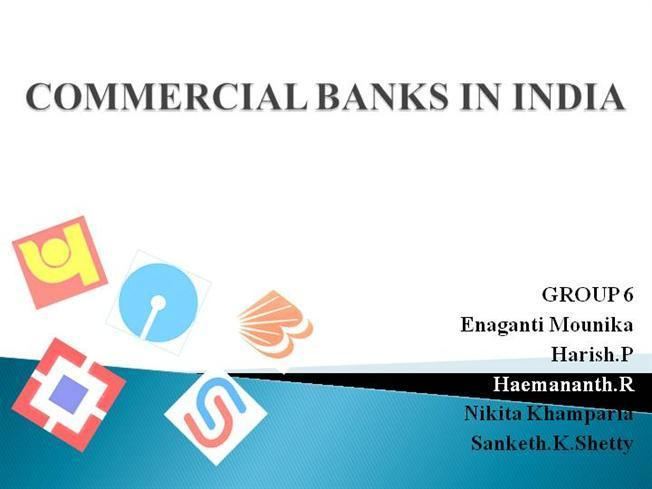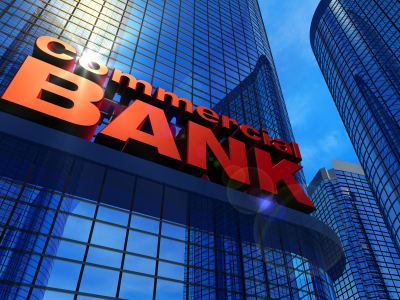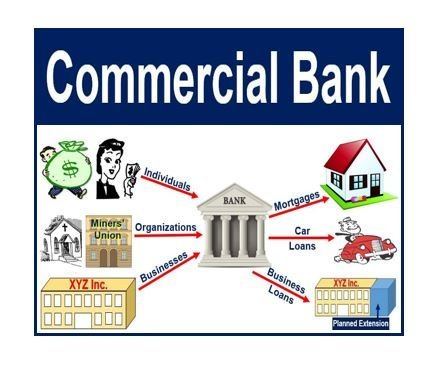Commercial banks meaning and functions class 12
A commercial bank is a type of financial institution that provides services such as accepting deposits, making business loans, and offering basic investment products. Commercial bank can also refer to a bank, or a division of a large bank, which more specifically deals with deposit and loan services provided to corporations or large/middle-sized business - as opposed to individual members of the public/small business - retail banking, or merchant banks.
Contents
- Commercial banks meaning and functions class 12
- Class 12 macroeconomics banking commercial bank and functions economics on your tips video 57
- Origin of the term
- Role
- Primary functions
- Regulations
- Bank reserves
- Services by product
- Core products and services
- Other functions
- Loan types
- Secured loans
- Unsecured loan
- References

Class 12 macroeconomics banking commercial bank and functions economics on your tips video 57
Origin of the term

The name bank derives from the Italian word banco "desk/bench", used during the Renaissance era by Florentine bankers, who used to carry out their transactions on a desk covered by a green tablecloth. However, traces of banking activity can be found even in ancient times.

In the United States the term "commercial bank" was often used to distinguish it from an investment bank due to differences in bank regulation. After the Great Depression, through the Glass–Steagall Act, the U.S. Congress required that commercial banks only engage in banking activities, whereas investment banks were limited to capital market activities. This separation was mostly repealed in 1999 by the Gramm–Leach–Bliley Act but was restored by the Volcker Rule, implemented in January 2014 as part of the Dodd-Frank Act of 2010.
Role

The general role of commercial banks is to provide financial services to general public and business, ensuring economic and social stability and sustainable growth of the economy.
In this respect, "credit creation" is the most significant function of commercial banks. While sanctioning a loan to a customer, they do not provide cash to the borrower. Instead, they open a deposit account from which the borrower can withdraw. In other words, while sanctioning a loan, they automatically create deposits, known as a "credit creation from commercial banks".
Primary functions
Regulations
In most countries central banks are responsible for the oversight of the commercial banking system of their respective countries. They will impose a number of conditions on the banks that they regulate such as keeping bank reserves and to maintain minimum capital requirements.
Bank reserves
Bank reserves or "central bank reserves" are banks' holdings of deposits in accounts with their central bank (for instance the European Central Bank or the Federal Reserve, in the latter case including federal funds), plus currency that is physically held in the bank's vault ("vault cash"). Some central banks set minimum reserve requirements, which require banks to hold deposits at the central bank equivalent to at least a specified percentage of their liabilities such as customer deposits. Even when there are no reserve requirements, banks often opt to hold some reserves —called desired reserves— against unexpected events such as unusually large net withdrawals by customers or bank runs.
Services by product
Commercial banks generally provide a number of services to its clients, these can be split into core banking services such as deposits and loans and other services which are related to payment systems and other financial services.
Core products and services
Other functions
Along with core products and services, commercial banks perform several secondary functions. The secondary functions of commercial banks can be divided into agency functions and utility functions.
Agency functions include:
Utility functions include:
Loan types
All the loans in the Commercial banking, irrespective of the particular type of bank product, are subject to be "secured" or "unsecured".
Secured loans
A secured loan is a loan in which the borrower pledges some asset (e.g., a car or property) as collateral for the loan, which then becomes a secured debt owed to the creditor who gives the loan. The debt is thus secured against the collateral — in the event that the borrower defaults, the creditor takes possession of the asset used as collateral and may sell it to regain some or all of the amount originally lent to the borrower, for example, foreclosed a portion of the bundle of rights to specified property. If the sale of the collateral does not raise enough money to pay off the debt, the creditor can often obtain a deficiency judgment against the borrower for the remaining amount. The opposite of secured debt/loan is unsecured debt, which is not connected to any specific piece of property and instead the creditor may only satisfy the debt against the borrower rather than the borrower's collateral and the borrower.
Unsecured loan
Unsecured loans are monetary loans that are not secured against the borrower's assets (no collateral is involved). There are small business unsecured loans such as credit cards and credit lines to large corporate credit line . These may be available from financial institutions under many different guises or marketing packages such as:
